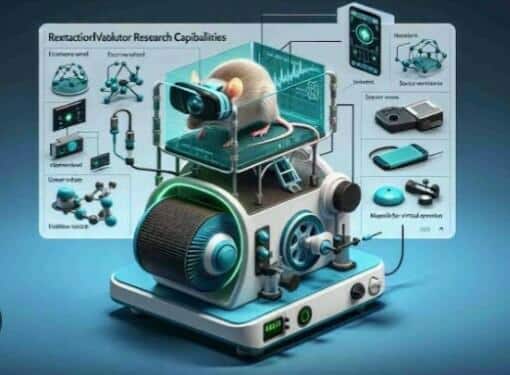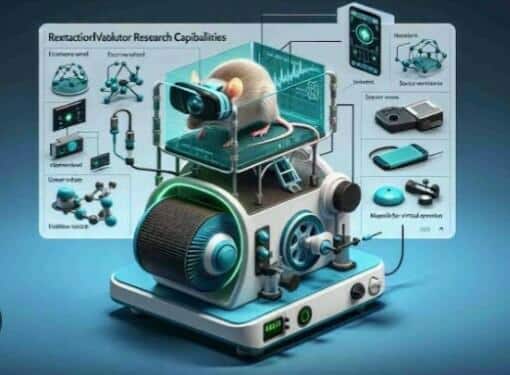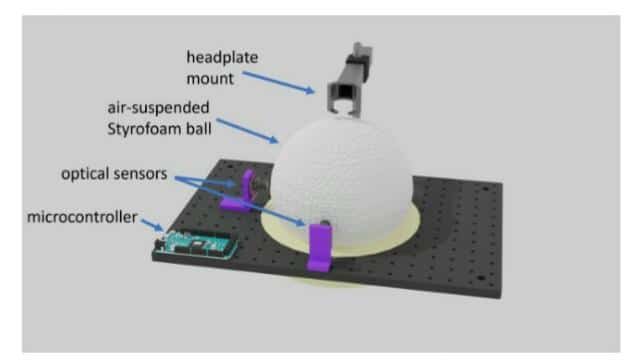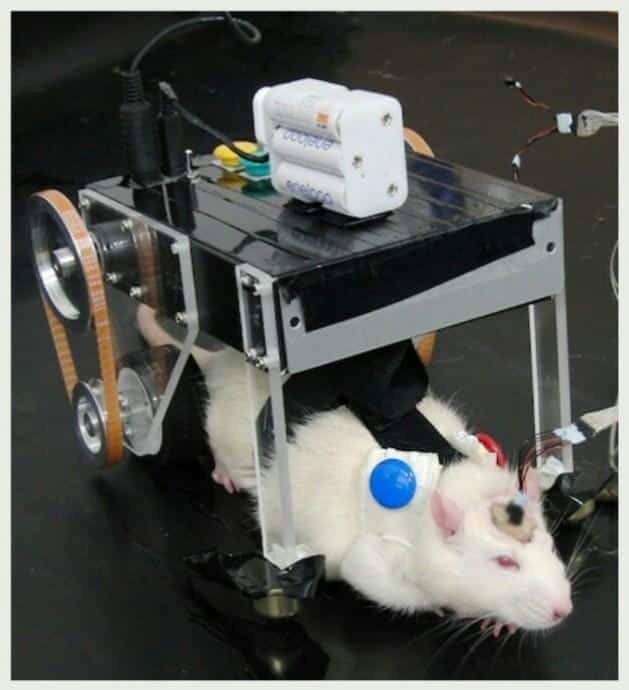
Check out our latest products
How are electronics transforming research with lab mice? Mice are stepping into a tech-driven future, where VR headsets, AI pain detectors, and smart sensors are revolutionising research with precision, compassion, and groundbreaking innovation.
The world is virtually battling to improve the health condition of mankind. Environmental factors such as pollution are affecting our health, and diseases are eating away at our bodies and minds. The modern world is flourishing with lab research activities, which may include the invention of pharmaceutical drugs, vaccines, or the study of neurological behaviours. Over 120 million mice and rats are used annually in research. They are conventionally housed in shoebox-sized cages that restrict their natural behaviours. Small is beautiful.
Role of Electronics on Lab Research Mice
Electronic systems can greatly enhance the accuracy and speed of research tasks by automating data. Recently, radio frequency identification transponders (RFID tags) have been used to label mice. They are implanted beneath the skin of mice and address several of the problems associated with non-electronic methods. An RFID tag typically consists of electronic circuitry and a solenoid antenna enclosed in a glass capsule. The transponders transmit unique alphanumeric codes that are easily distinguished from each other and analysed by a dedicated reading device.

As innovation becomes a practice, it is not surprising that extremely flexible, centimetre-wide mesh electronics can be injected into the brains of mice, allowing them to record neuron activity without damaging surrounding tissue. The tweak is that these devices could lead to improved neural implants, helping to interact with brain tissue to treat diseases such as Parkinson’s and aids neuroscientists in studying brain circuitry.
IoT (Internet of Things) sensors attached to different mice can be used to collect motion data and classify these into different behaviours using machine learning algorithms.
Tiny LED devices can be implanted in a mouse’s head and on a nerve in its leg to stimulate genetically altered neurons that respond to flashes of light. This optogenetic technology helps to ‘turn on’ precise groups of neurons to study the results. These wirelessly powered implants are about the size of peppercorns. As a result, they do not burden the mice or change their behaviour.
A Tiny VR Headset Designed for a Mouse!
Scientists at Northwestern University in the US have built a tiny pair of virtual reality (VR) goggles for mice to understand better how their brains work. It makes use of custom-designed lenses and miniature displays. This compact VR headset is also called ‘ immersive’ Miniature Rodent Stereo Illumination VR (iMRSIV).

There are numerous benefits of iMRSIV. Some of them are:
- Reduced training time
- Creation of life-like scenarios that give rise to instinctive behaviours in mice
- Laboratory space saving
- Reduced costs
- Potentially higher results in behavioural research
- User-friendliness
- It can make neurobiology research more accessible
Miniature virtual reality for mice: the Schaffer-Nishimura Lab innovation
This miniature VR system is designed to study the behaviour of mice. Using a combination of unique technologies, tiny subjects like mice are immersed in various closed-loop (interactive) and open-loop (non-interactive) visual scenes. The news was first reported by Tom’s Hardware.
This mouse VR headset is powered by a Raspberry Pi 4 computer running the Godot video game engine. It features two SPI displays to deliver simple VR experiences at a resolution of 240×210 and a frame rate of >60 fps. These components are bound together using a custom 3D-printed headset case that keeps the mouse’s head in place during testing.
A spherical treadmill allows mice to navigate closed-loop VR experiences naturally. The system is composed of an air-suspended styrofoam ball, headplate mount, optical sensors, and a microcontroller. As the mice move on top of the ball, optical sensors directed at the treadmill track the yaw, pitch, and roll and translate the data into 2D movement.
The Godot game engine converts these detected mouse movements into the appropriate camera movement in the virtual scene.
To use this VR system, any type of treadmill control system that translates through a mouse emulator is required. This setup also allows the human user to test the game environments and experiments using a standard computer mouse or touchpad.
Schaffer-Nishimura Lab has uploaded instructions on GitHub (https://github.com/sn-lab/MouseGoggles) so that one can conduct their own behaviour research using custom VR technology.

Emerging technologies in animal research: from AI to smart transport solutions
An artificial intelligence could gauge how much pain a laboratory mouse is in based on its grimaces, potentially aiding the development of pain-relieving drugs. Thanks to artificial intelligence (AI), it could replace the need to use live animals. In the future, this could help save rats and guinea pigs from mass lab slaughter, according to industry experts. The darker side is that more than 111 million rodents are used in experiments and killed annually in biomedical research worldwide. Even the hybrid system, that is, half robot, half rat system, is becoming popular in research labs.

For example, a RatCar (Fig. 3), which was developed in a research lab in Japan. Scientists hope that this could lead to improved mobility for people with disabilities.
However, there are unavoidable challenges associated with the transportation of lab research rats. Rats are exposed to various environmental conditions such as humidity, heat, temperature, and different physical and mental stresses during transportation. Such factors cause changes in their physiological parameters, such as heart rate (HR), breathing rate (BR), blood pressure, body temperature, and hormone levels. If a researcher does not notice these alterations, it certainly could negatively affect the results of the performed investigations.
Some of the leading electronics systems are providing practical solutions to this problem. The typical electronic rat transportation container includes integration of hardware (matrix of EPIC sensors, webcam, visible light and infrared sensors, accelerometer, humidity sensor, buzzer, and circuits for the voltage adaptation of inputs and signals) and software (sensor selection, signal conditioning, and acquisition).
Marching Ahead
One of the main reasons for deploying mice for lab research is to reduce the cost of clinical trials. This advantage can further be enhanced by deploying electronic systems on lab research mice. It is impossible to clone the beauty and intelligence of mice brains with iMRSIV. The penetration of AI and other electronics giants reminds us of Murphy’s eighth law: “If everything seems to be going well, you have obviously overlooked something.”
References
- Scientists put tiny goggles on mice to learn how animals think by Anthony Cuthbertson
- Neuroscientists wirelessly control the brains of scampering lab mice by Ada Poon
- Check Out This Tiny VR Headset Designed For Mice by Kyle Melnick
- Next-Gen Virtual Reality For Lab Mice Enhances Research Capabilities by Natalia Toczkowska.
- Monitoring System For Laboratory Mice Transportation by Ellen Damm and others
- Article from New Scientist
- Other web pages
Author By: Vinayak Ramachandra Adkoli holds a BE degree in Industrial Production and has been a lecturer in three different polytechnics for ten years. He is also a freelance writer and cartoonist.


![[5G & 2.4G] Indoor/Outdoor Security Camera for Home, Baby/Elder/Dog/Pet Camera with Phone App, Wi-Fi Camera w/Spotlight, Color Night Vision, 2-Way Audio, 24/7, SD/Cloud Storage, Work w/Alexa, 2Pack](https://m.media-amazon.com/images/I/71gzKbvCrrL._AC_SL1500_.jpg)



![[3 Pack] Sport Bands Compatible with Fitbit Charge 5 Bands Women Men, Adjustable Soft Silicone Charge 5 Wristband Strap for Fitbit Charge 5, Large](https://m.media-amazon.com/images/I/61Tqj4Sz2rL._AC_SL1500_.jpg)





